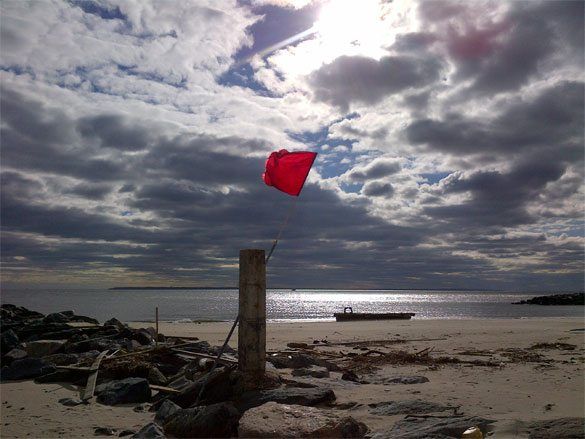Linkwrap: Sandy Anniversary Coverage From Around The City

It’s hard for us to step away and do our own one-year retrospective on Superstorm Sandy and the recovery. We’ve been writing about it – dealing with it – every day. For us, October 29, 2013, the anniversary of the storm, will be a day where we unite with our neighbors to quietly reflect on all that we’ve been through, before returning to the work of writing about, and participating in, rebuilding our community bigger, better and stronger.
So rather than dig in and do another piece on where we are, what has been done, and what still needs to be done, we’re pulling together reports from around the city to create what we think is a fairly comprehensive picture of the progress.
The overall message is this: we’ve come a long way to recovery, but we’ve got quite a bit farther to go.
Here’s a list of links about the one-year anniversary of Sandy so far, and we expect to post another list tomorrow:
Sandy: a regional perspective. A state-by-state rundown of the damage and recovery, at a glance. [Associated Press]- Are the city’s hardest-hit communities being heard? Local leaders say no, and that while there’s been a lot of talk about recovery and resiliency, there’s been little action. [Gotham Gazette]
- What if Sandy happened today? We’re more resilient when it comes to electrical infrastructure and mass transit. Engineers are in the process of re-shoring the beaches to provide better protection from storm surges. And the hospital system’s has made several major upgrades to prevent shutdowns like the one at Coney Island Hospital, which took it off-line for many months after the storm. But we’ve still got a long road ahead. [Crain’s New York Business]
- We can respond more quickly. At least that’s the message from New York City officials. The city government has implemented a slew of new protocols that may not protect us from a disaster, but could make managing it more efficient. This includes a case management database for the city’s most vulnerable, reviewing and improving the emergency shelter system, and an increase in mobile fuel trucks and generators. [LoHud.com]
- Here’s more about the upgrades at Sandy-stricken hospitals. [NY1]
- The NYPD is also better prepared, having learned from their mistakes and purchased new equipment, including more motor boats. [NY1]
- City planners have balked at major public works like seawalls for protecting the coastline, and instead are focusing on natural barriers and zoning codes. The result is improvement that appears slow-going, but may be more forward-looking.
- Businesses in Brighton Beach continue to struggle from the storm’s impact, in a story that could be set in any other Sandy-hit neighborhood. [Jewish Daily Forward]
- Sandy made New York City a tale of two cities: those in the flood zones, and those who weren’t. Flood zone residents continue to face problems with FEMA and insurance companies, as well as structural issues and high vacancy rates due to fears from another storm. The rest of the city, meanwhile, has moved on to other things. [Brooklyn Daily Eagle]
- Overall, the federal, state and city governments have done a better job than in previous disasters when it comes to rebounding on infrastructure, but community-level recovery and long-term resiliency efforts leave something to be desired. [The Nelson A. Rockefeller Institute of Government]
- Vladimir Kleynburd, 51, of Coney Island, was added to the official death toll of Hurricane Sandy victims, bringing the total count of New York City deaths to 45. He was not in the original count because he was overlooked at the morgue. [Daily News]
- There were many heartwarming stories that emerged from Sandy. Here’s one that just surfaced: Brighton Beach resident Kinga Kusek went into labor in the middle of the storm, and gave birth to Adrian Storm Kusek at her sister’s Mill Basin home as water lapped at the door. [Daily News]
Know of a good Superstorm Sandy retrospective? Share the link in the comments.




